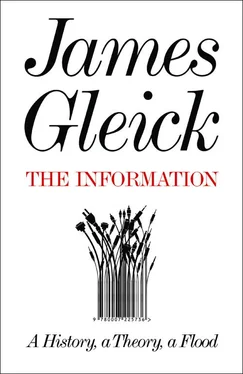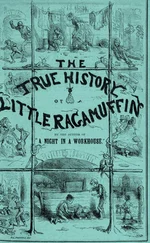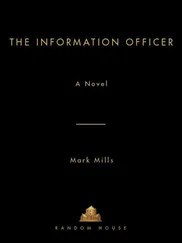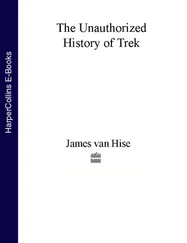In America, a country bursting with invention and scientific optimism, Edgar Allan Poe wrote, “What shall we think of the calculating machine of Mr. Babbage? What shall we think of an engine of wood and metal which can . . . render the exactitude of its operations mathematically certain through its power of correcting its possible errors?” Ralph Waldo Emerson had met Babbage in London and declared in 1870, “Steam is an apt scholar and a strong-shouldered fellow, but it has not yet done all its work.”
It already walks about the field like a man, and will do anything required of it. It irrigates crops, and drags away a mountain. It must sew our shirts, it must drive our gigs; taught by Mr. Babbage, it must calculate interest and logarithms. . . . It is yet coming to render many higher services of a mechanico-intellectual kind.
Its wonders met disapproval, too. Some critics feared a rivalry between mechanism and mind. “What a satire is that machine on the mere mathematician!” said Oliver Wendell Holmes Sr. “A Frankenstein-monster, a thing without brains and without heart, too stupid to make a blunder; which turns out results like a corn-sheller, and never grows any wiser or better, though it grind a thousand bushels of them!” They all spoke as though the engine were real, but it never was. It remained poised before its own future.
Midway between his time and ours, the Dictionary of National Biography granted Charles Babbage a brief entry—almost entirely devoid of relevance or consequence:
mathematician and scientific mechanician; . . . obtained government grant for making a calculating machine . . . but the work of construction ceased, owning to disagreements with the engineer; offered the government an improved design, which was refused on grounds of expense; . . . Lucasian professor of mathematics, Cambridge, but delivered no lectures.
Babbage’s interests, straying so far from mathematics, seeming so miscellaneous, did possess a common thread that neither he nor his contemporaries could perceive. His obsessions belonged to no category—that is, no category yet existing. His true subject was information: messaging, encoding, processing.
He took up two quirky and apparently unphilosophical challenges, which he himself noted had a deep connection one to the other: picking locks and deciphering codes. Deciphering, he said, was “one of the most fascinating of arts, and I fear I have wasted upon it more time than it deserves.” To rationalize the process, he set out to perform a “complete analysis” of the English language. He created sets of special dictionaries: lists of the words of one letter, two letters, three letters, and so on; and lists of words alphabetized by their initial letter, second letter, third letter, and so on. With these at hand he designed methodologies for solving anagram puzzles and word squares.
In tree rings he saw nature encoding messages about the past. A profound lesson: that a tree records a whole complex of information in its solid substance. “Every shower that falls, every change of temperature that occurs, and every wind that blows, leaves on the vegetable world the traces of its passage; slight, indeed, and imperceptible, perhaps, to us, but not the less permanently recorded in the depths of those woody fabrics.”
In London workshops he had observed speaking tubes, made of tin, “by which the directions of the superintendent are instantly conveyed to the remotest parts.” He classified this technology as a contribution to the “economy of time” and suggested that no one had yet discovered a limit on the distance over which spoken messages might travel. He made a quick calculation: “Admitting it to be possible between London and Liverpool, about seventeen minutes would elapse before the words spoken at one end would reach the other extremity of the pipe.” In the 1820s he had an idea for transmitting written messages, “enclosed in small cylinders along wires suspended from posts, and from towers, or from church steeples,” and he built a working model in his London house. He grew obsessed with other variations on the theme of sending messages over the greatest possible distances. The post bag dispatched nightly from Bristol, he noted, weighed less than one hundred pounds. To send these messages 120 miles, “a coach and apparatus, weighing above thirty hundred weight, are put in motion, and also conveyed over the same space.” What a waste! Suppose, instead, he suggested, post towns were linked by a series of high pillars erected every hundred feet or so. Steel wires would stretch from pillar to pillar. Within cities, church steeples might serve as the pillars. Tin cases with wheels would roll along the wires and carry batches of letters. The expense would be “comparatively trifling,” he said, “nor is it impossible that the stretched wire might itself be available for a species of telegraphic communication yet more rapid.”
During the Great Exhibition of 1851, when England showcased its industrial achievement in a Crystal Palace, Babbage placed an oil lamp with a moveable shutter in an upstairs window at Dorset Street to create an “occulting light” apparatus that blinked coded signals to passersby. He drew up a standardized system for lighthouses to use in sending numerical signals and posted twelve copies to, as he said, “the proper authorities of the great maritime countries.” In the United States, the Congress approved $5,000 for a trial program of Babbage’s system. He studied sun signals and “zenith-light signals” flashed by mirrors, and Greenwich time signals for transmission to mariners. For communicating between stranded ships and rescuers on shore, he proposed that all nations adopt a standard list of a hundred questions and answers, assigned numbers, “to be printed on cards, and nailed up on several parts of every vessel.” Similar signals, he suggested, could help the military, the police, the railways, or even, “for various social purposes,” neighbors in the country.
These purposes were far from obvious. “For what purposes will the electric telegraph become useful?” the king of Sardinia, Charles Albert, asked Babbage in 1840. Babbage searched his mind for an illustration, “and at last I pointed out the probability that, by means of the electric telegraphs, his Majesty’s fleet might receive warning of coming storms. . . .”
This led to a new theory of storms, about which the king was very curious. By degrees I endeavoured to make it clear. I cited, as an illustration, a storm which had occurred but a short time before I left England. The damage done by it at Liverpool was very great, and at Glasgow immense. . . . I added that if there had been electric communication between Genoa and a few other places the people of Glasgow might have had information of one of those storms twenty-four hours previously to its arrival.
As for the engine, it had to be forgotten before it was remembered. It had no obvious progeny. It rematerialized like buried treasure and inspired a sense of puzzled wonder. With the computer era in full swing, the historian Jenny Uglow felt in Babbage’s engines “a different sense of anachronism.” Such failed inventions, she wrote, contain “ideas that lie like yellowing blueprints in dark cupboards, to be stumbled on afresh by later generations.”
Meant first to generate number tables, the engine in its modern form instead rendered number tables obsolete. Did Babbage anticipate that? He did wonder how the future would make use of his vision. He guessed that a half century would pass before anyone would try again to create a general-purpose computing machine. In fact, it took most of a century for the necessary substrate of technology to be laid down. “If, unwarned by my example,” he wrote in 1864, “any man shall undertake and shall succeed in really constructing an engine embodying in itself the whole of the executive department of mathematical analysis upon different principles or by simpler mechanical means, I have no fear of leaving my reputation in his charge, for he alone will be fully able to appreciate the nature of my efforts and the value of their results.”
Читать дальше











